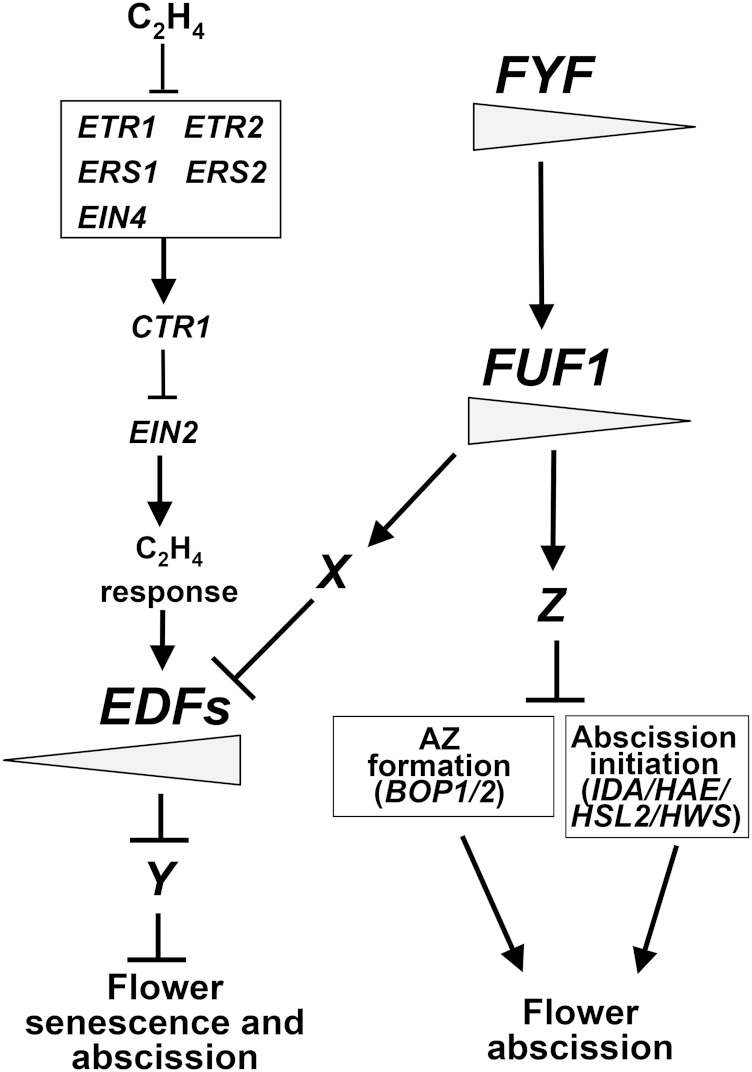Figure 7.
A model for the function of FYF and FUF1 genes in regulating flower senescence and abscission. In wild-type flowers, FYF negatively regulates the ethylene signaling pathway by activating (→) the expression of FUF1. In this pathway, FUF1 activates (→) an X gene, which negatively regulates (line with bar) the EDF1/2/3/4 downstream genes of the ethylene signaling pathway. EDF1/2/3/4 promotes the senescence/abscission by suppressing (line with bar) a Y gene that functions to suppress (line with bar) the senescence/abscission. The suppression of EDF1/2/3/4 before pollination results in the repression of senescence/abscission. This pathway also regulates abscission by activating (→) a Z gene that suppresses (line with bar) the expression of BOP1 and BOP2, which regulate the formation of the AZ and the expression of genes, such as IDA/HAESA/HSL2/HWS, that regulate the initiation of abscission. The ectopic expression of FYF or FUF1 suppressed EDF1/2/3/4, BOP1/2, and IDA/HAESA/HSL2/HWS and caused the inhibition of senescence/abscission during all stages of flower development. The gradient of FYF and FUF1 activity is illustrated as the gradual reduction in the size of the gray bar during flower maturation. In contrast, the gradient of EDF1/2/3/4 activity is illustrated as the gradual increase in the size of the gray bar during flower maturation.

